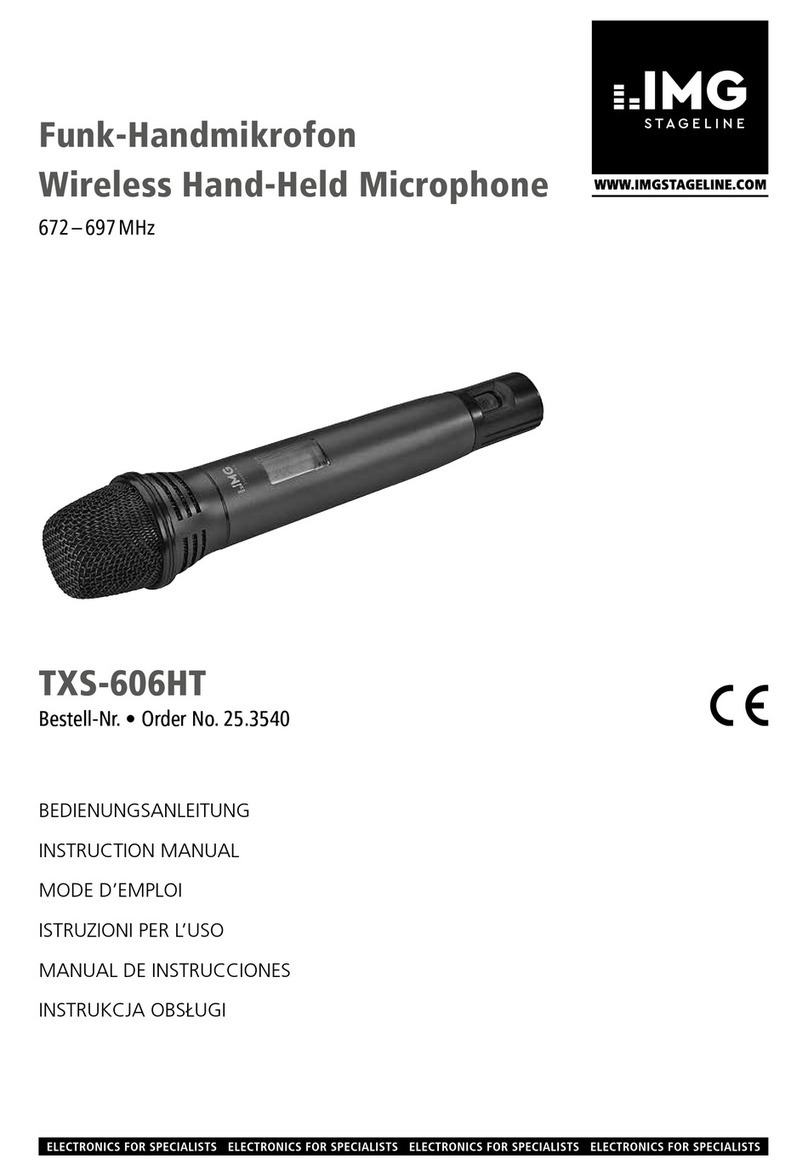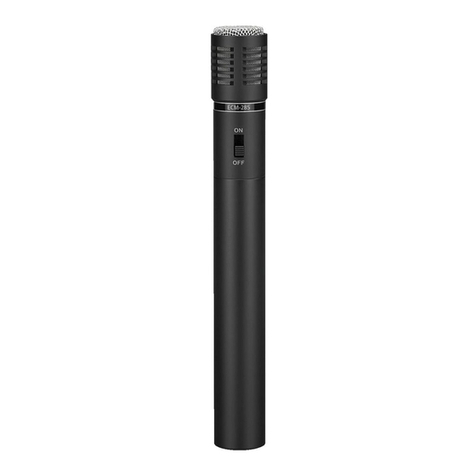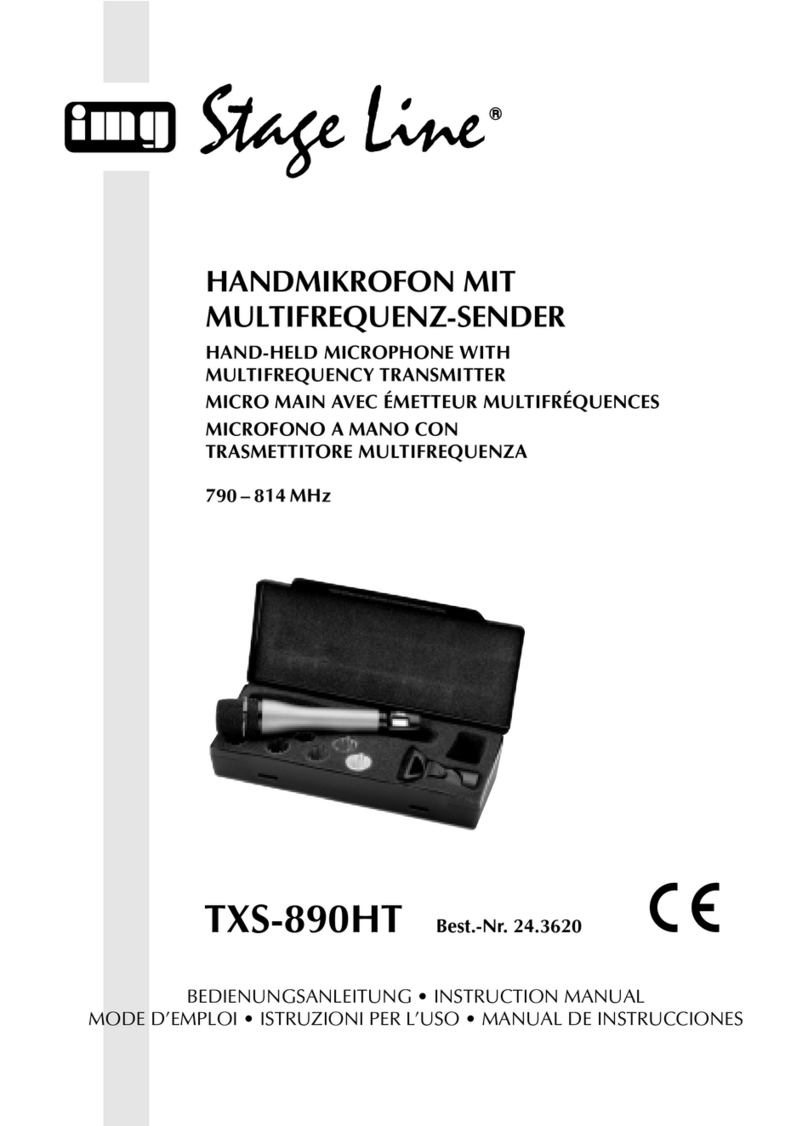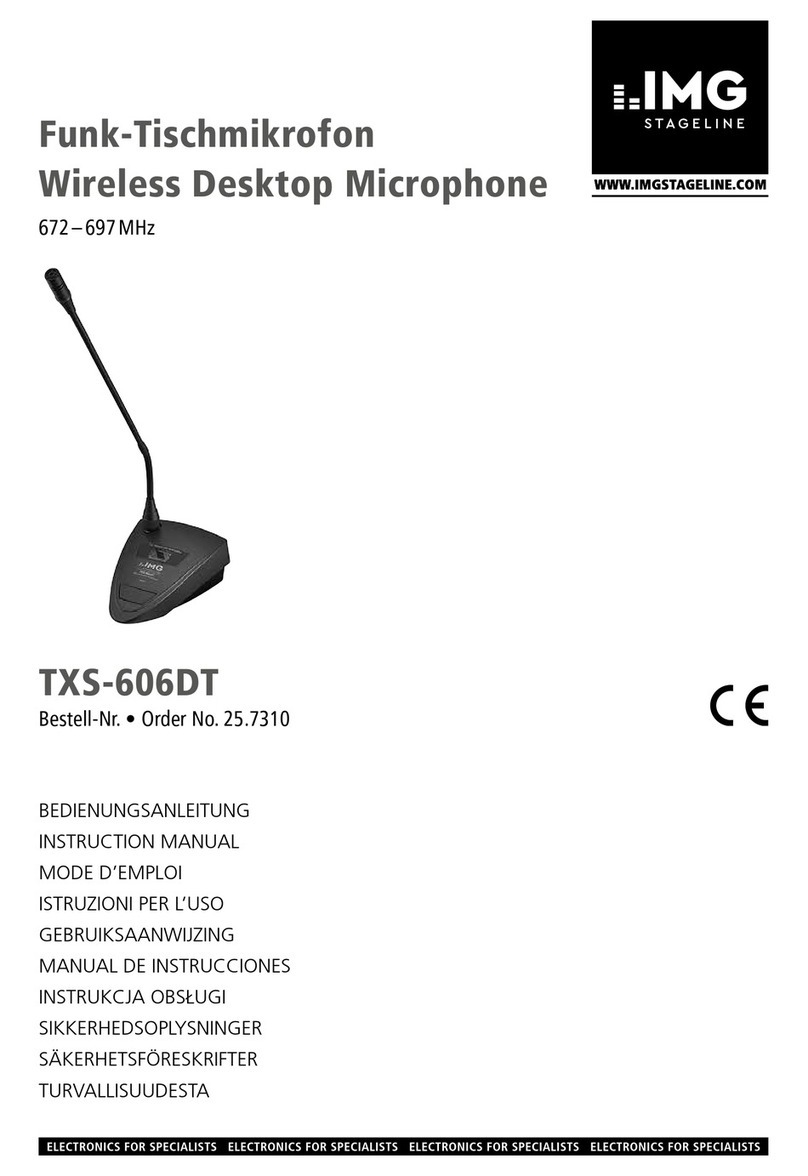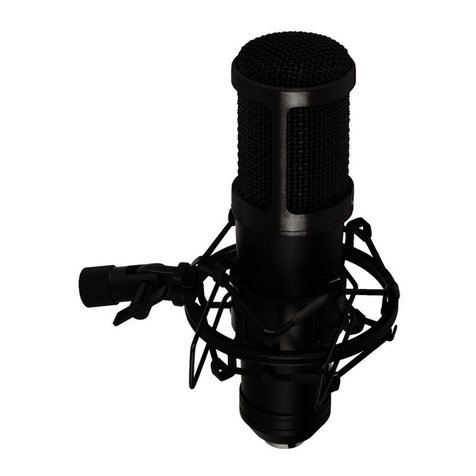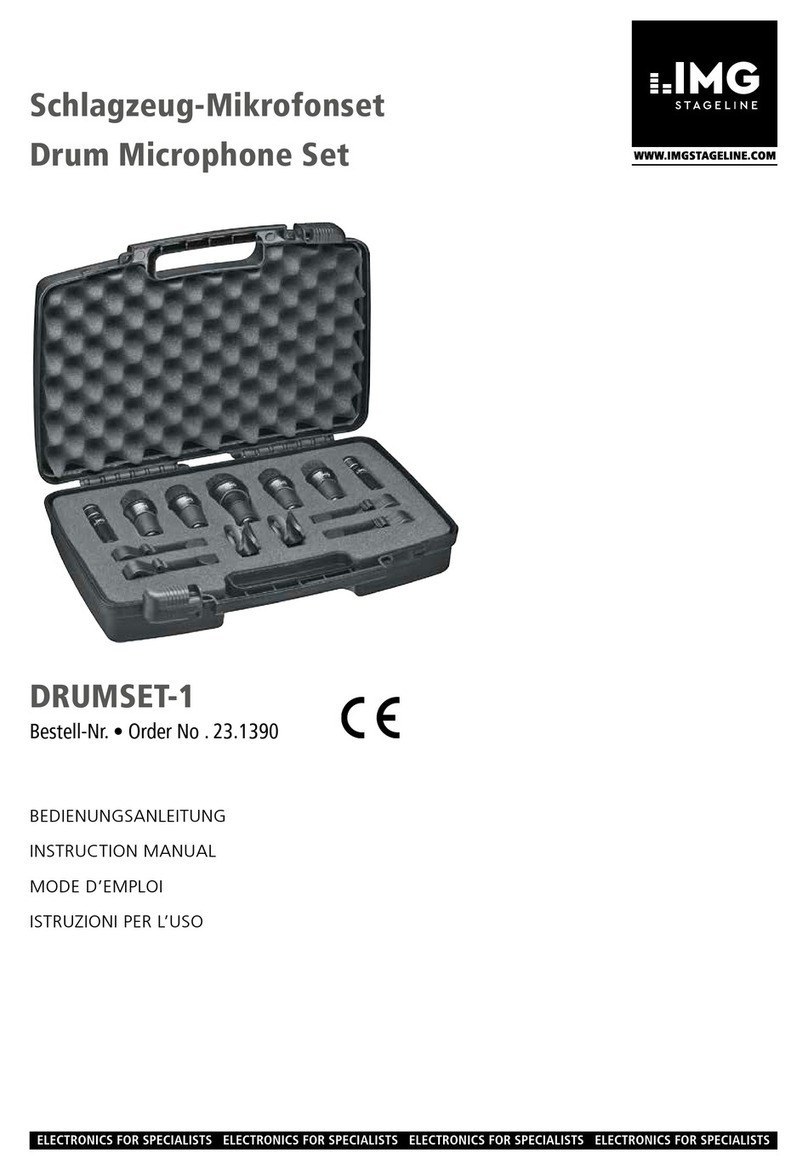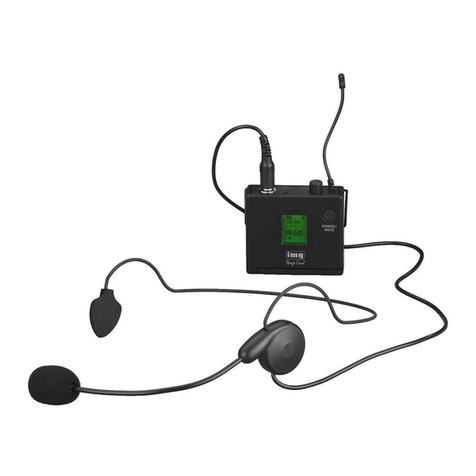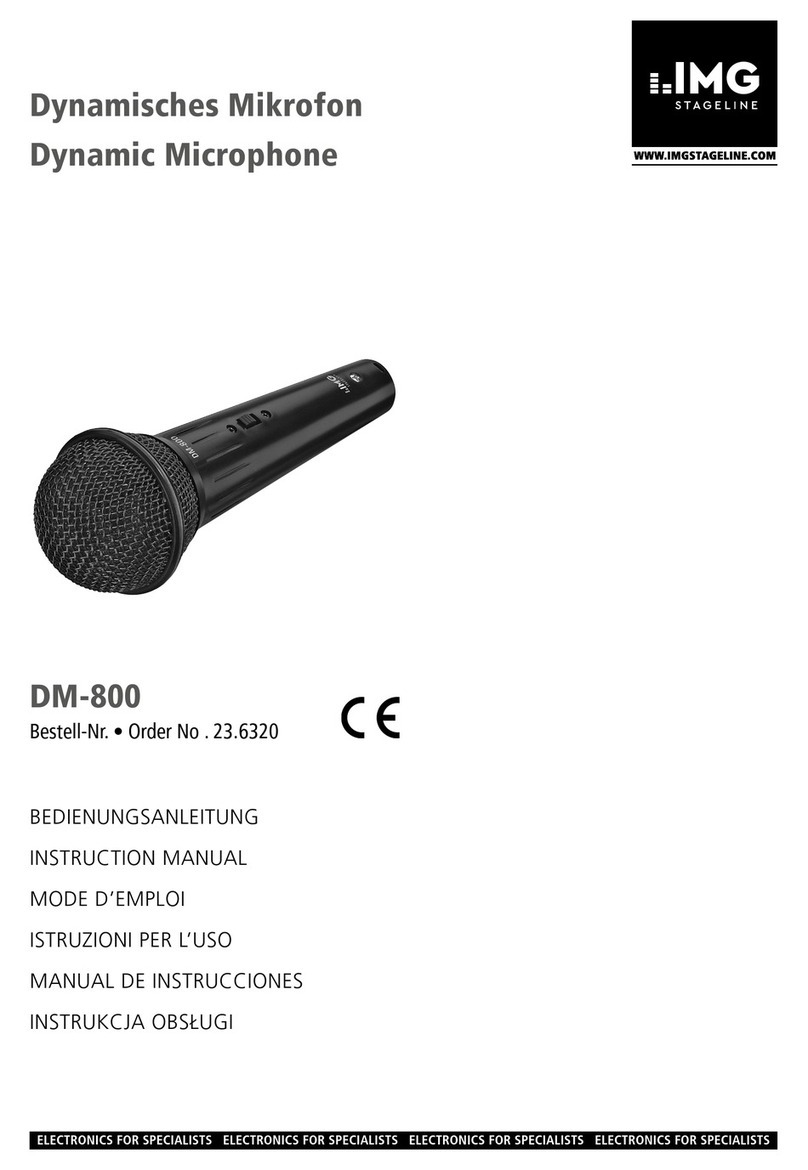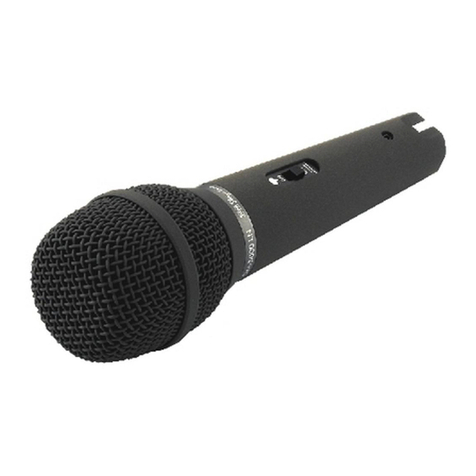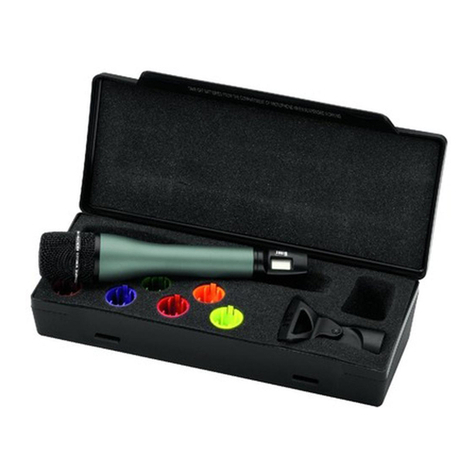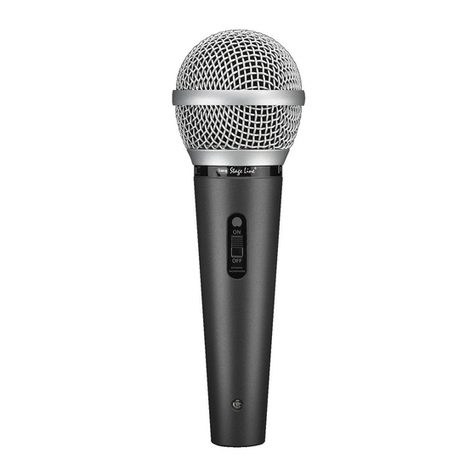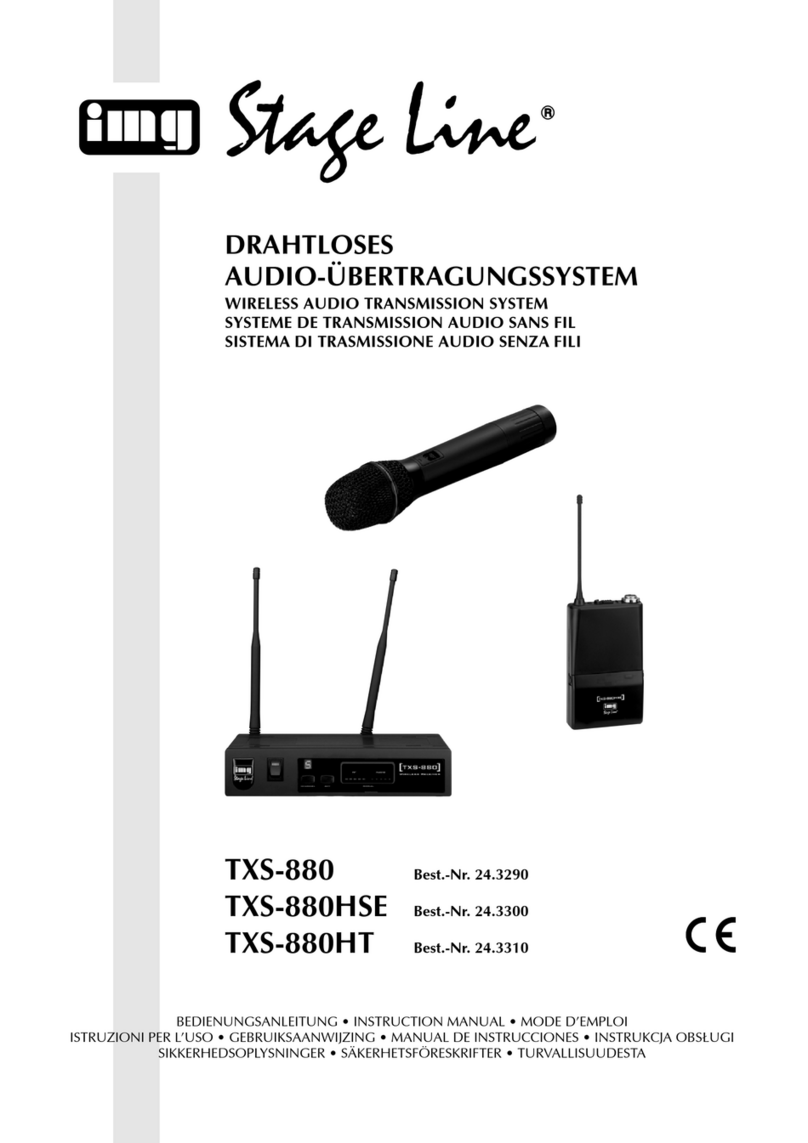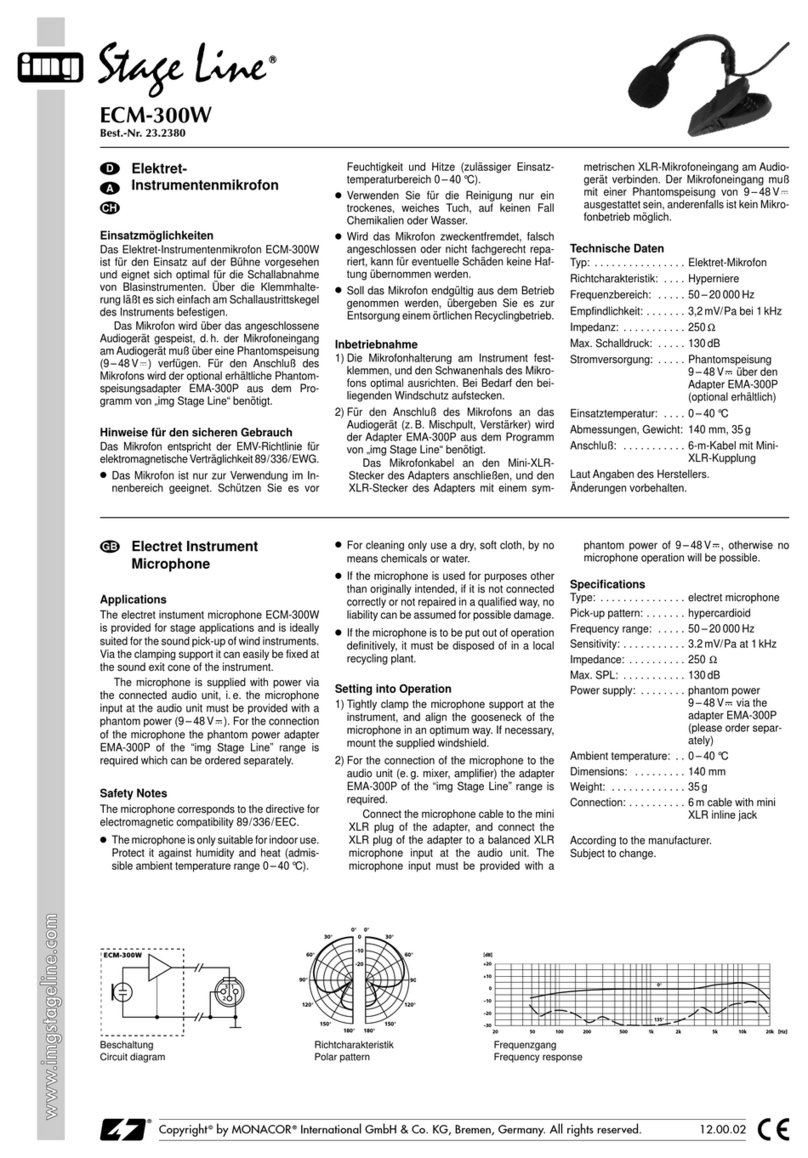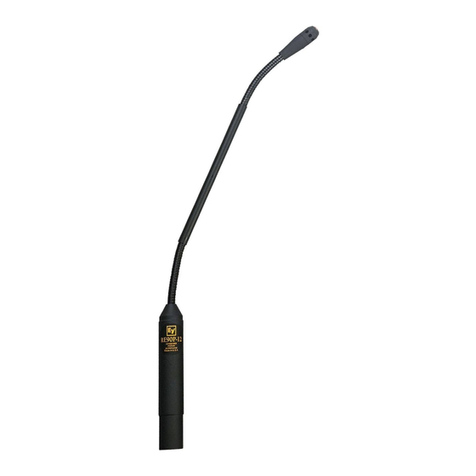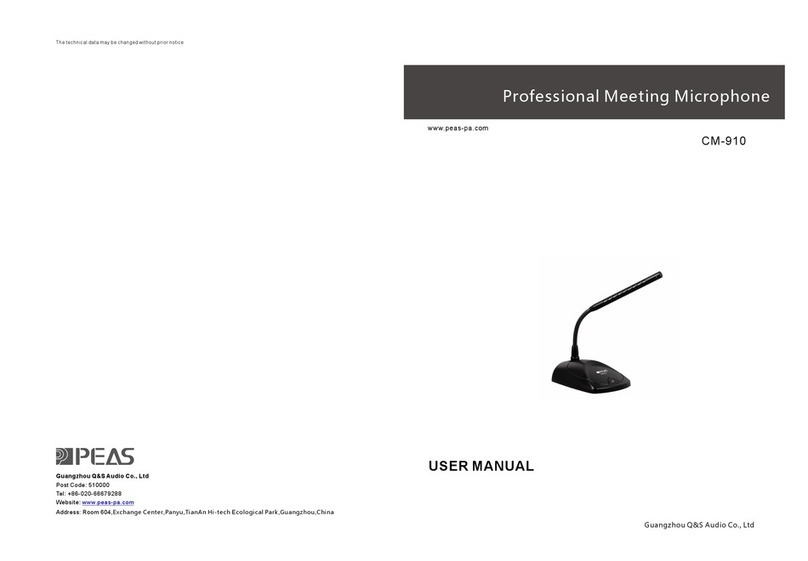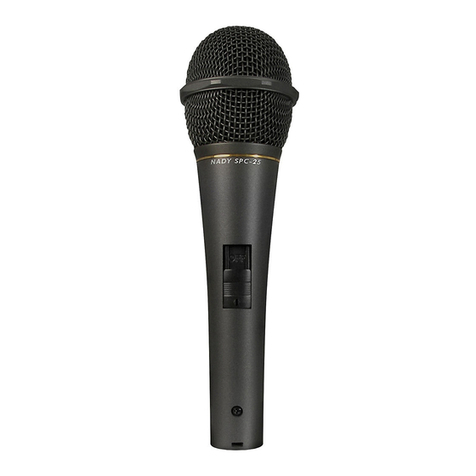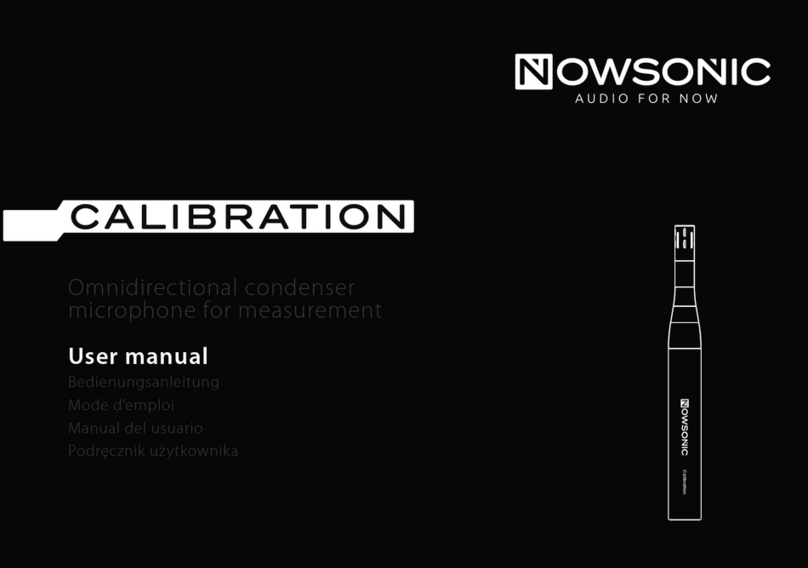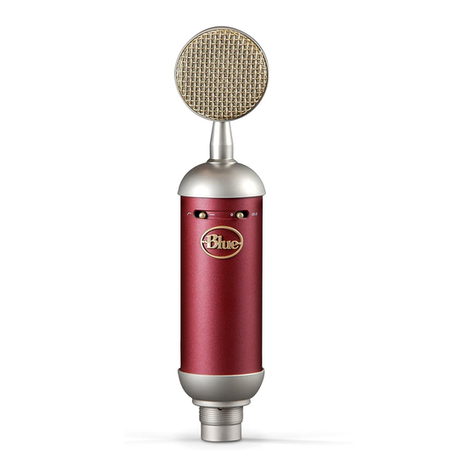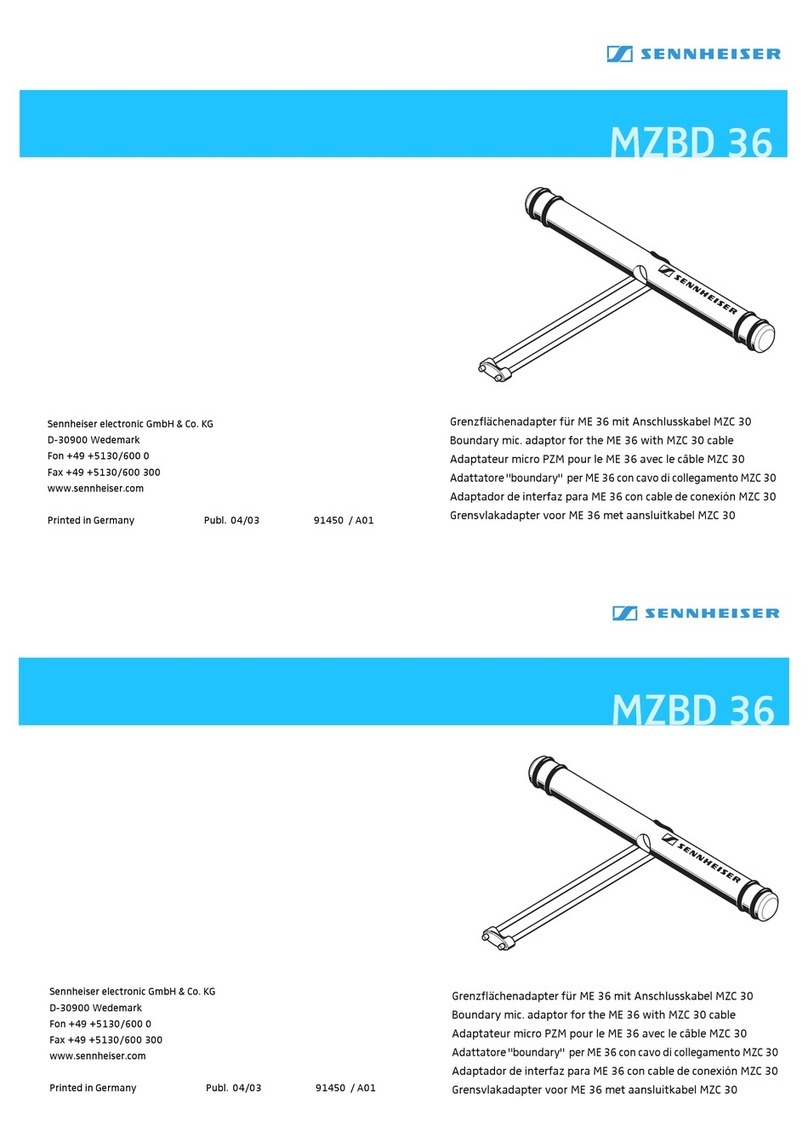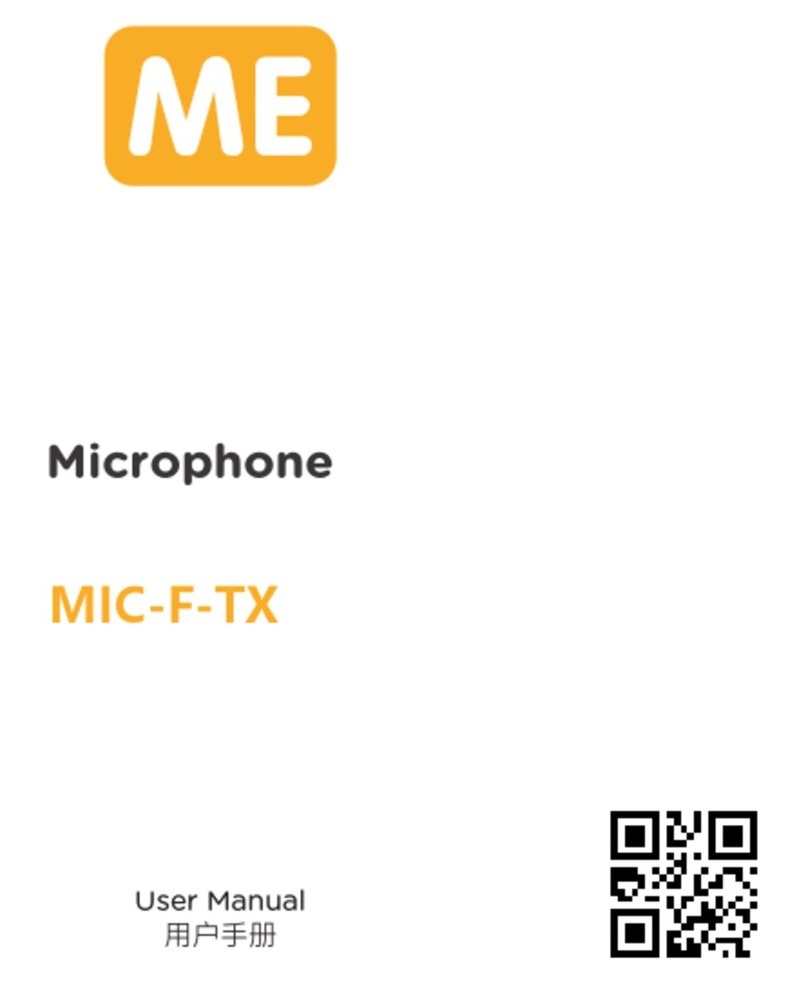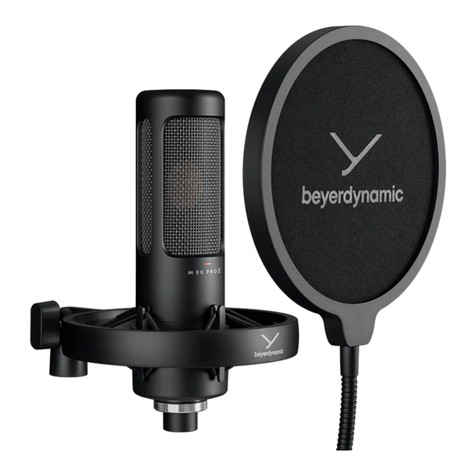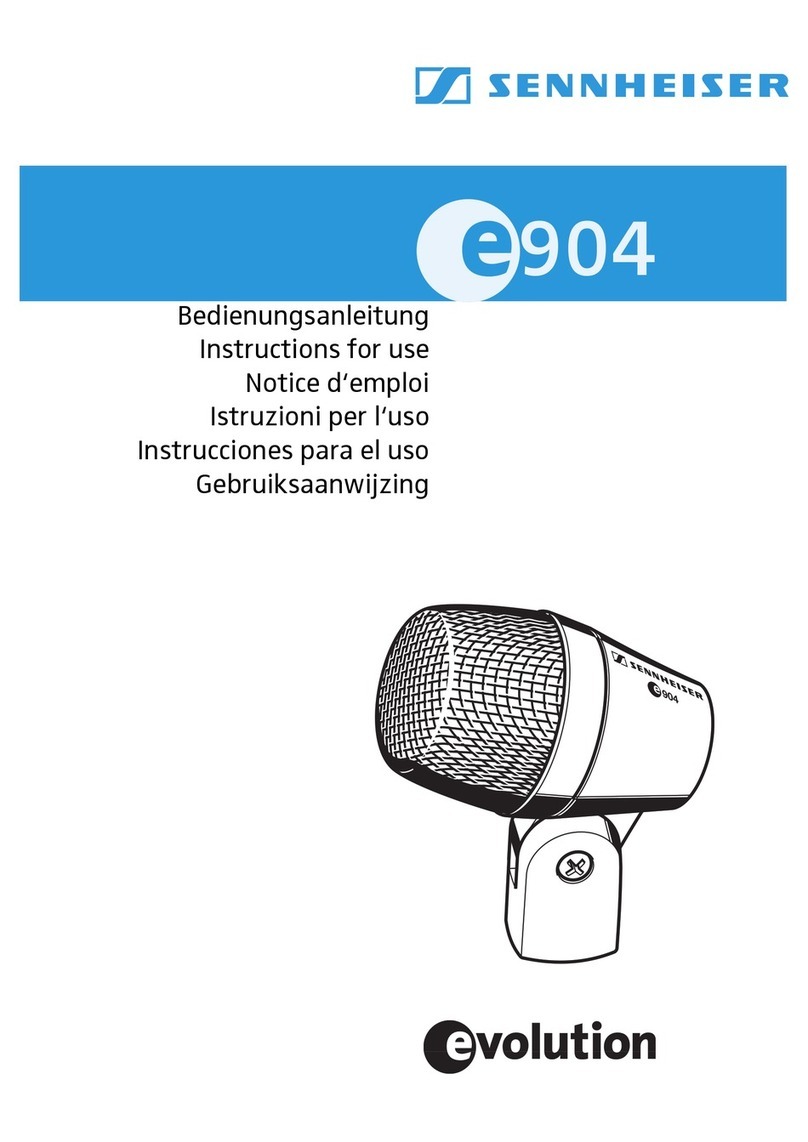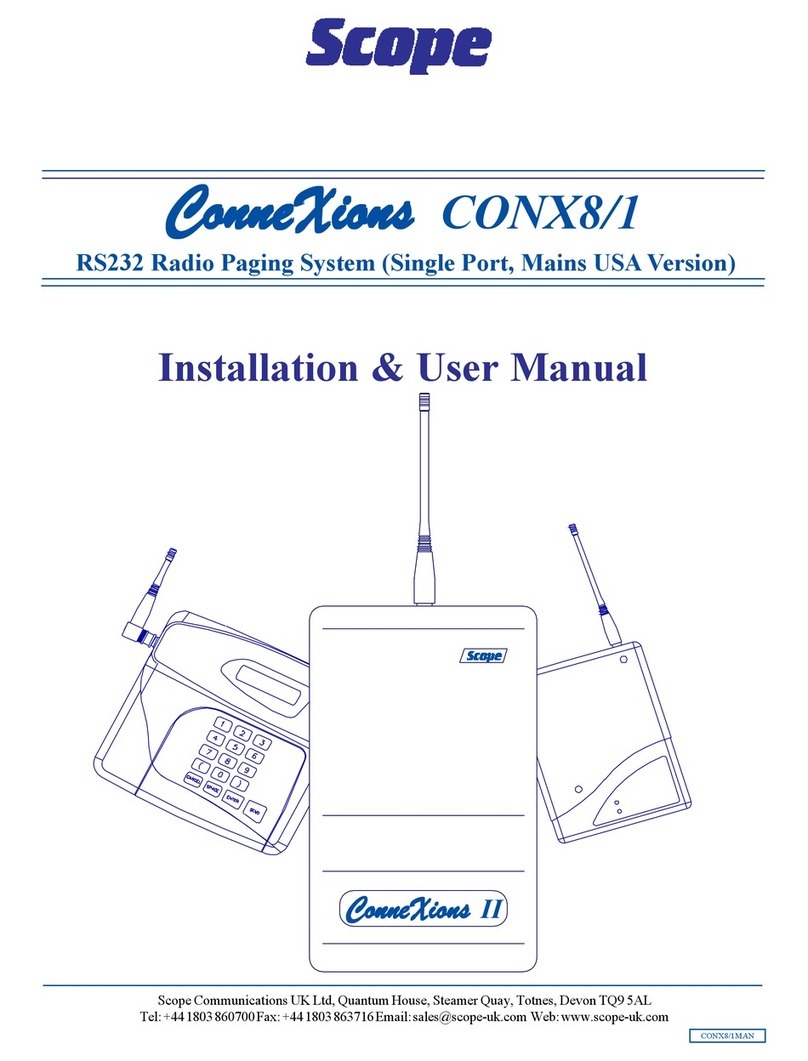
ELECTRONICS FOR SPECIALISTS ELECTRONICS FOR SPECIALISTS ELECTRONICS FOR SPECIALISTS ELECTRONICS FOR SPECIALISTS ELECTRONICS FOR SPECIALISTS ELECTRONICS
ECM-250
Bestell-Nr. • Order No. 0233480
MONACOR INTERNATIONAL GmbH & Co. KG • Zum Falsch 36 • 28307 Bremen • Germany
Copyright©by MONACOR INTERNATIONAL. All rights reserved. A-0193.99.03.08.2021
Zestaw Mikrofonów Elektretowych
Niniejsza instrukcja przeznaczona jest dla użyt-
kowników posiadających co najmniej podsta-
wową wiedzą z zakresu technologii audio. Przed
rozpoczęciem użytkowania proszę zapoznać się
z instrukcją, a następnie zachować ją do wglądu.
1 Zastosowanie
Dwa mikrofony nagłowne ECM-250 przeznaczone są
do odbioru dźwięków generowanych przez różnego
rodzaju instrumenty perkusyjne. Zasilane są napięciem
fantomowym 48V. Wyposażone są w filtr górnoprze-
pustowy oraz przełącznik wytłumienia o 10dB. W skład
zestawu wchodzą ponadto plastikowe opakowanie
oraz dwa uchwyty.
2 Środki bezpieczeństwa
Mikrofony spełniają wszystkie wymagania norm UE,
dlatego są oznaczone symbolem .
•
Mikrofony są przeznaczone tylko do użytku we-
wnątrz pomieszczeń. Chroń przed wodą, wysoką
wilgotnością i wysoką temperaturą (dopuszczalny
zakres temperatury to 0–40°C).
•
Do czyszczenia mikrofonów używać tylko suchej, de-
likatnej ścierki – nie używać wody, ani chemicznych
środków czystościowych.
•
Producent ani dostawca nie ponosi odpowiedzial-
ności za wynikłe szkody materialne, jeśli mikrofony
było używane niezgodnie z przeznaczeniem, zostało
zainstalowane lub obsługiwane niepoprawnie lub
poddawane nieautoryzowanym naprawom.
Jeżeli mikrofony nie będą już nigdy uży-
wane należy oddać je do miejsca utylizacji
odpadów, gdzie zostaną zniszczone bez
szkody dla środowiska.
3 Obsługa
1) Wsunąć mikrofony w uchwyty. Uchwyty dokręcić
do statywów mikrofonowych: W przypadku, gdy
średnica gwintu statywu mikrofonowego wynosi
15,9mm (
5⁄8”), należy usunąć śrubę adaptacyjną
uchwytu i dokręcić go bezpośrednio do statywu.
Jeżeli średnica gwintu statywu wynosi 9,5mm (
3⁄8”),
należy zamocować do niego uchwyt stosując śrubę
adaptacyjną.
2) Połączyć mikrofony za pomocą odpowiednich kabli
(np.: kabli serii MEC) z dwoma symetrycznymi wej-
ściami mikrofonowymi urządzenia audio (np.: mik-
sera). Wejście mikrofonowe musi być wyposażone
w zasilanie fantomowe ⎓48V prądu stałego. Jeżeli
urządzenie audio nie posiada wejścia mikrofono-
wego wyposażonego w zasilanie fantomowe, należy
zastosować zewnętrzny zasilacz fantomowy (np.:
EMA-200) pomiędzy mikrofonem, a wejściem audio.
3) W obu mikrofonach należy odpowiednio do wy-
magań ustawić dwa przełączniki (za pomocą nie-
wielkiego śrubokręta), które odpowiedzialne są za
następujące funkcje:
a) Górny przełącznik służy do włączenia filtra gór-
noprzepustowego, wyciszającego niskie częstotli-
wości (pozycja ).
b) Dolny przełącznik służy do włączania wytłumie-
nia sygnału o 10dB (pozycja “−10”).
4 Dane techniczne
Typ/charakterystyka: . elektretowy/kardioidalna
Zakres częstotliwości:. 50–16000Hz
Impedancja: . . . . . . . . 200Ω
Czułość przy 1kHz: . . . 18mV/Pa (0dB),
5,6mV/Pa (−10dB)
Maks. SPL: . . . . . . . . . . 130 dB
Współczynnik S/N: . . . 66dB
Zasilanie:. . . . . . . . . . . fantomowe ⎓
48V
Wymiary, waga: . . . . . ⌀19 mm × 80 mm, 25 g
Gniazdo wyjściowe: . . XLR
Z zastrzeżeniem możliwość zmian.
Conjunto de Micrófonos Electret
Estas instrucciones van dirigidas a usuarios con
conocimientos básicos en audio. Lea atentamente
estas instrucciones antes de funcionamiento y
guárdelas para usos posteriores.
1 Aplicaciones
Los dos micrófonos Overhead del conjunto ECM-250 se
adaptan perfectamente a la toma de sonido de baterías
(p.ej. címbalo) y a los instrumentos de percusión. Fun-
cionan con una alimentación phantom de 48V y cada
uno dispone de un interruptor Low Cut y de un atenua-
dor de 10dB. Junto con los micrófonos de entregamos
una maleta de plástico y dos pinzas de micrófono.
2 Notas Importantes
Los micrófonos cumplen con todas las directivas rele-
vantes de la UE y por lo tanto estàn marcados con el
símbolo .
•
Los micrófonos están adecuados para utilizarse en
interiores. Protéjalos de goteos y salpicaduras, ele-
vada humedad del aire y calor (temperatura am-
biente admisible: 0–40°C).
•
Para limpiarlos, utilice únicamente un trapo seco y
suave, en ningún caso productos químicos o agua.
•
No podrá reclamarse garantía o responsabilidad al-
guna por cualquier daño personal o material resul-
tante si los micrófonos se utilizan para otros fines
diferentes a los originalmente concebidos, si no se
conectan adecuadamente o si no se reparan por ex-
pertos.
Si los micrófonos se van a dejar fuera de
servicio definitivamente, deshágase de los
micrófonos según las normativas locales.
3 Funcionamiento
1) Introduzca los micrófonos en las pinzas y atornille
las pinzas en los pies de micrófono: Para un pie con
una rosca de 15,9mm (
5⁄8”), saque el adaptador de
rosca y atornille directamente la pinza. Para un pie
con una rosca de 9,5mm (
3⁄8”), fije la pinza vía el
adaptador de rosca.
2) Conecte los micrófonos vía cables de conexion (p.ej.
de la serie MEC) a dos entradas de micrófono XLR
simétricas del aparato de audio (p.ej. mezclador).
Las entradas deben respectivamente disponer de
una alimentación phantom de ⎓48V. Si el aparato
de audio no dispone de alimentación phantom, co-
necte los micrófonos vía un aparato de alimentación
phantom (p.ej. EMA-200) al aparato de audio.
3) En cada micrófono, pulse los dos interruptores em-
potrados con un objeto de pequeñas dimensiones
(p.ej. atornillador pequeño) en la posición deseada:
a) con el interruptor superior, puede conmutar un
filtro Low Cut (pasa alto) para disminuir las fre-
cuencias graves (posición ).
b) con el interruptor inferior, puede disminuir la
sensibilidad de 10dB (posición “−10”).
4 Especificaciones
Tipo/Directividad:. . . . electret/cardioide
Rango de frecuencias: 50 – 16 000 Hz
Impedancia: . . . . . . . . 200Ω
Sensibilidad a 1kHz:. . 18mV/Pa (0dB),
5,6mV/Pa (−10dB)
Presión sonora máx.: . 130dB
Relación señal/ruido: . 66dB
Alimentación: . . . . . . . alimentación phantom ⎓
48V
Dimensiones, peso:. . . ⌀19 mm × 80 mm, 25 g
Conexión: . . . . . . . . . . XLR
Sujeto a modificaciones técnicas.
Set di microfoni a elettrete
Queste istruzioni sono rivolte a utenti con cono-
scenze base nella tecnica audio. Vi preghiamo di
leggerle attentamente prima della messa in fun-
zione e di conservarle per un uso futuro.
1 Possibilità d’impiego
I due microfoni overhead del set ECM-250 sono adatti
in modo ottimale per prelevare il suono della batteria
(p.es. dei piatti) e di strumenti a percussioni. Funzio-
nano con alimentazione phantom 48V e dispongono
ognuno di un interruttore low-cut e di un attenuatore
di 10dB. Sono in dotazione una valigetta di plastica e
due supporti.
2 Avvertenze importanti
I microfoni sono conformi a tutte le direttive rilevanti
dell’UE e pertanto portano la sigla .
•
Usare i microfoni solo in ambienti interni. Proteg-
gerli dall’acqua gocciolante e dagli spruzzi d’acqua,
da alta umidità dell’aria e dal calore (temperatura
d’impiego ammessa fra 0 e 40°C).
•
Per la pulizia usare solo un panno morbido, asciutto;
non impiegare in nessun caso prodotti chimici o
acqua.
•
Nel caso d’uso improprio, di collegamenti sbagliati o
di riparazione non a regola d’arte dei microfoni, non
si assume nessuna responsabilità per eventuali danni
consequenziali a persone o a cose e non si assume
nessuna garanzia per i microfoni.
Se i microfoni devono essere messi definiti-
vamente fuori servizio, smaltire i microfoni
in conformità con le normative locali.
3 Messa in funzione
1) Inserire i microfoni sui supporti e avvitare questi
sugli stativi per microfoni. Nel caso di stativi con
filettatura di 15,9mm (
5⁄8”), togliere gli adattatori
posti sui supporti e avvitare i supporti direttamente
sugli stativi. Con stativi con filettatura di 9,5mm
(
3⁄8”) occorre usare gli adattatori.
2) Collegare i microfoni con due ingressi XLR simmetrici
dell’apparecchio audio (p.es. del mixer) servendosi
di appositi cavi di collegamento (p.es. della serie
MEC). Gli ingressi devono possedere ognuno un’ali-
mentazione phantom ⎓48V. Se l’apparecchio audio
non dispone di alimentazione phantom occorre col-
legare i microfoni per mezzo di un alimentatore
phantom (p.es. EMA-200) sul apparecchio audio.
3) Su ogni microfono impostare la posizione deside-
rata dei due interruttori incassati con l’aiuto di un
oggetto stretto (p.es. di un piccolo cacciavite):
a) con l’interruttore superiore si può attivare un
filtro low-cut (passaalto) per abbassare le fre-
quenze basse (posizione ).
b) con l’interruttore inferiore si può attenuare la
sensibilità di 10dB (posizione “−10”).
4 Dati tecnici
Tipo/proprietà direzionale: elettrete/cardioide
Banda di frequenze:. . . . . . 50–16000Hz
Impedenza:. . . . . . . . . . . . . 200 Ω
Sensibilità a 1kHz: . . . . . . . 18mV/Pa (0dB),
5,6mV/Pa (−10dB)
Pressione sonora max.:. . . . 130dB
Rapporto S/R: . . . . . . . . . . . 66 dB
Alimentazione:. . . . . . . . . . alimentazione phantom
⎓
48V
Dimensioni, peso:. . . . . . . . ⌀19 mm × 80 mm, 25 g
Collegamento: . . . . . . . . . . XLR
Con riserva di modifiche tecniche.
Italiano
Español
Polski
Risposta di frequenza
Respuesta de frecuencia
Wykresy charakterystyk częstotliwości
-30
-40
-50
-60
-70
-80
(dB)
50 100 200 500 1k 2k 5k 10k 20k(Hz)
low-cut filter off
➀
-30
-40
-50
-60
-70
-80
(dB)
50 100 200 500 1k 2k 5k 10k 20k(Hz)
low-cut filter on
➁


